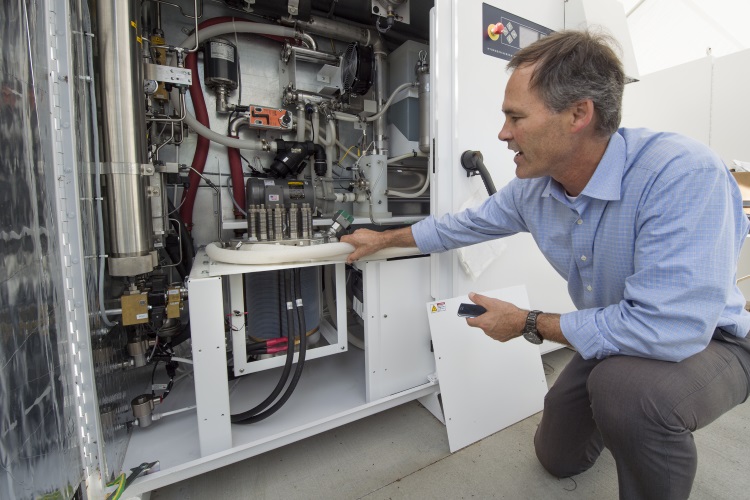The University of California, Irvine engineers have successfully implemented the first power-to-gas (P2G) hydrogen pipeline injection project in the United States, demonstrating the use of excess clean electricity that would otherwise go to waste. What is the concept of P2G? It’s a technique for converting surplus sustainable energy from solar panels or wind farms into hydrogen, which can be blended with natural gas and utilized in everything from home appliances to power plants. The renewable fuel can also be stored in containment vessels for later use, such as in hydrogen fuel-cell vehicles. The storage is what makes this so interesting, especially for renewable energies like wind and solar. The research shows that you don’t have to stop renewable power generation when demand is low. You simply use the excess electricity to make hydrogen that can be integrated into the existing natural gas pipeline infrastructure.

Jack Brouwer, UCI associate professor of mechanical & aerospace engineering and civil & environmental engineering, explains the workings of an electrolyzer, a key component of the power-to-gas system. The device uses renewable electricity to split water into oxygen and hydrogen. The oxygen is released into the atmosphere, and the hydrogen is injected into the natural gas supply line for UCI’s power plant.
The central component of the process is the electrolyzer, which takes in water and uses excess clean electricity to power an electrochemical reaction that splits it into hydrogen and oxygen. The latter is released into the atmosphere, and the hydrogen is compressed and sent about 60 feet through a pencil-thin, stainless-steel tube to an injection point in UCI’s natural gas pipeline. The hydrogen is mixed with natural gas and burned in the gas turbine power plant to generate electricity and heat for the campus. Researchers are also looking into methanation, which takes carbon dioxide out of the atmosphere and combines it with renewable hydrogen to create a new, sustainable fuel source. Find more information at: https://news.uci.edu/faculty/in-a-national-first-uci-injects-renewable-hydrogen-into-campus-power-supply/.
Reusing PEV Li-ion batteries
A report from Navigant Research explores the concept of reusing plug-in electric vehicle (PEV) lithium ion (Li-ion) batteries for stationary energy storage system (ESS) applications, focusing on the key issues, market drivers, and challenges related to reusing second-life PEV batteries. Li-ion battery packs in EVs have shown less degradation and better performance than expected thanks to robust pack design and careful thermal and charging management. Although the specific power and energy capacity performance parameters for second-life reuse will need to be determined, these batteries will likely have high power and energy capacities, making them well suited for grid-storage applications such as frequency regulation, as well as longer duration applications. The report says that capacity of Li-ion batteries for PEV second-life stationary energy storage is expected to grow 10 GWh from 2022 to 2035. The report, Alternative Revenue Models for Advanced Batteries, explores the concept of reusing PEV Li-ion batteries for stationary ESS applications. The study examines the issues, including market drivers and challenges, related to second-life batteries and suggests moves for stakeholders to help make the concept become a reality. Global forecasts for the availability and capacity of these batteries, as well as their future price ceilings, are provided.
Advertisement





